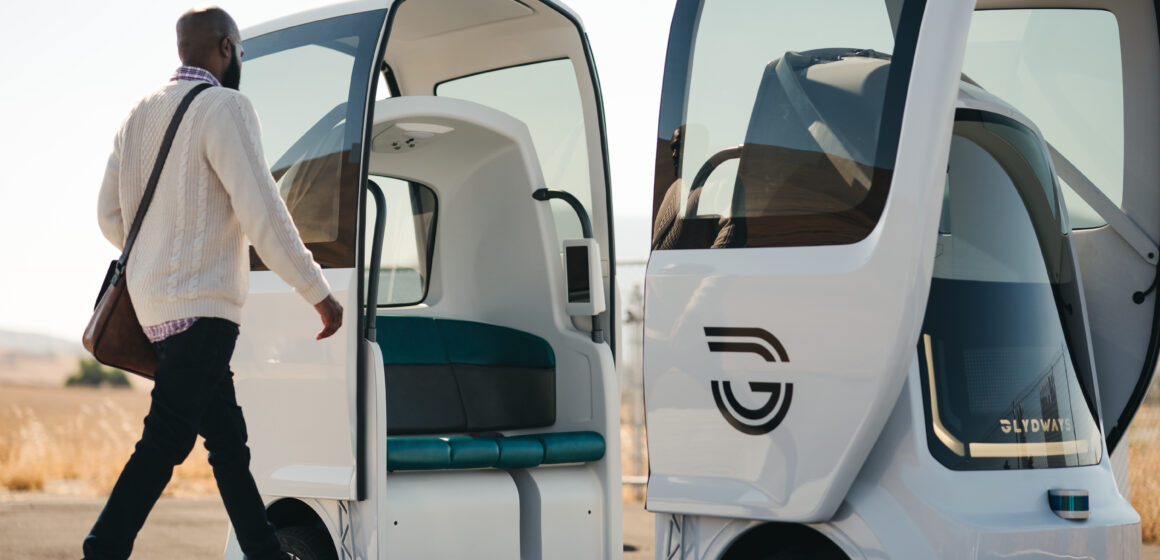In the year 2030, a woman walks from her apartment in downtown San Jose to Diridon Station, where she zips toward San Jose Mineta International Airport and arrives within five minutes for her flight.
This is the future imagined by proponents of the airport connector, a direct shuttle service between San Jose’s main train station and airport that would move automated electric cars over a guideway separated from city roads and freeways. The San Jose City Council will consider approving an initial study of the project on April 18 from Plenary Americas and Glydways.
Plenary, a North American public infrastructure developer, will team up with Glydways, a South San Francisco-based startup that designs and builds autonomous transit systems.
If approved, Plenary and Glydways will study the feasibility of building an airport connector, estimate a timeline and conduct a cost-benefit analysis. If the council decides not to move forward after the study is complete, the city would pay the contractors $500,000 for their work.
Ramses Madou, who manages the planning, policy and sustainability division in San Jose’s transportation department, said city traffic is going to increase significantly with all the downtown development in the pipeline.
“What we want to do is give folks the most reliable transit experience they can have,” he said.
Madou told San José Spotlight it’s too early to estimate how quickly the airport connector could be built, but if the city gave the go-ahead in the next few years, construction on the automated guideway could begin by 2026-2028, he said.
The idea goes back to 2000, when Santa Clara County voters approved Measure A. The half-cent sales tax was meant to fund transit operations and a few specific projects, including a connecting service between the San Jose airport and other transit lines.

VTA was supposed to implement the airport connector, but San Jose took over the project in 2017 and conducted a study to figure out what kind of connection would be most valuable to riders, Madou said. Diridon Station won out over the Santa Clara Caltrain Station as the most desired destination from the airport. The city received more than 20 preliminary proposals in 2019, and received three follow-up proposals in May 2022 after asking for bids to build a connector for less than $500 million—the most fitting coming from Plenary Americas and Glydways.
Proponents of the airport connector said an automated connection between Diridon Station and SJC could help ease growing congestion along San Jose roads and freeways while providing riders with a swift trip to their destination. An estimated 9,000 to 20,000 passengers would ride on the airport connector daily once it’s completed, according to Brian Stanke, San Jose’s project manager for the airport connector.
But critics, such as transit advocate and San José Spotlight columnist Monica Mallon, said a direct bus shuttle between the transit hubs could be operated at the fraction of the cost of an entirely automated guideway. She thinks Plenary’s initial study of the project will show their proposed airport connector is not a worthwhile investment.
“Obviously, if you have your own guideway, it is going to be faster,” Mallon told San José Spotlight. “But again, you’re spending $500 million to a $1 billion to build this; that’s a lot more expensive than running a bus.”
Dan Connolly, chair of the San Jose Airport Commission speaking on his own behalf, said San Jose should have had a direction connection between Diridon and the airport long ago. He said that while the city could pay for a bus shuttle between the airport and train station, it wouldn’t be as reliable as an automated service separated from traffic.
“You want a reliable source of transportation that’s going to be efficient and go from Point A to Point B on a very regular basis,” Connolly told San José Spotlight. “We are the hub of innovation here in Silicon Valley; I think we ought to have the most advanced technology available.”
Contact Sonya Herrera at [email protected] or follow @SMHsoftware on Twitter.
Editor’s Note: In a previous version of this story, city representatives provided an incorrect construction timeline for the automated guideway.



Leave a Reply
You must be logged in to post a comment.